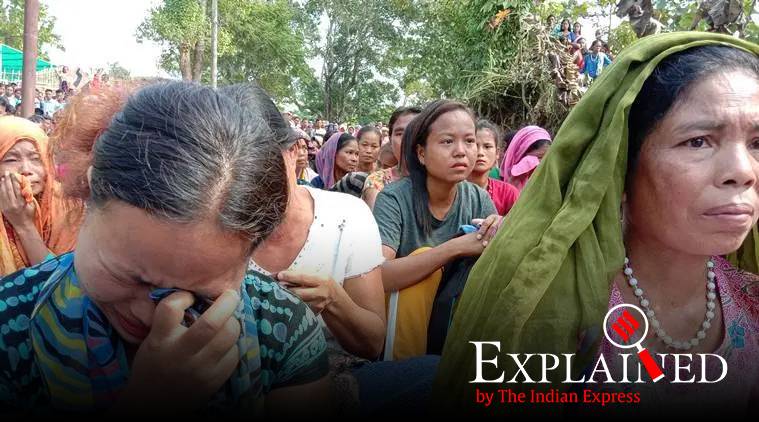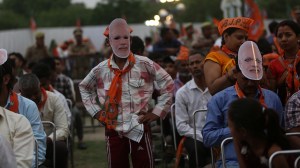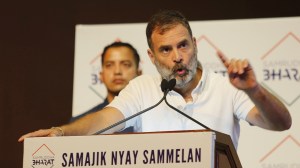- India
- International
Explained: Who are the Brus in Tripura camps, and why they are not returning to Mizoram
Bru or Reang is a community indigenous to Northeast India, living mostly in Tripura, Mizoram and Assam.
 On Thursday, the Tripura government announced that it would restore food supplies, leading to Brus withdrawing a road blockade they had set up for eight days. (Express Photo)
On Thursday, the Tripura government announced that it would restore food supplies, leading to Brus withdrawing a road blockade they had set up for eight days. (Express Photo)
Since October 1, six members of the Reang or Bru community have reportedly died in relief camps in Tripura, after the Centre decided to stop food supplies and cash dole. They were among 32,000 Brus living in these camps since 1997, when they fled their homes in Mizoram.
On Thursday, the Tripura government announced that it would restore food supplies, leading to the Brus withdrawing a road blockade they had set up for eight days. The restoration of supplies, however, is only until a deadline of November 30, within which the Brus have to decide whether they will accept a package for repatriation to Mizoram.
Explained: Who are the Brus?
Bru or Reang is a community indigenous to Northeast India, living mostly in Tripura, Mizoram and Assam. In Tripura, they are recognised as a Particularly Vulnerable Tribal Group. In Mizoram, they have been targeted by groups that do not consider them indigenous to the state. In 1997, following ethic clashes, nearly 37,000 Brus fled Mamit, Kolasib and Lunglei districts of Mizoram and were accommodated in relief camps in Tripura. Since then, 5,000 have returned to Mizoram in eight phases of repatriation, while 32,000 still live in six relief camps in North Tripura.
What have they been surviving on?
Under a relief package announced by the Centre, a daily ration of 600 grams rice was provided to every adult Bru person and 300 grams to every minor. Some salt too was given to each family. The package also provided for a daily cash dole of Rs 5 per adult and Rs 2.5 for every minor, besides essentials like soap, slippers and mosquito nets over various periods.
Most of the migrants would sell a part of their rice and use this money, along with the cash dole, to buy various supplies including medicines. Most of their vegetable supplies would come from wild growth nearby, where some of them have been practising slash and burn cultivation.

They live in makeshift bamboo thatched huts, without permanent power supply, a safe drinking water supply system, health centres, or schools.
Why are they still here?
In June 2018, community leaders from the Bru camps signed an agreement in Delhi with the Centre and the two state governments, providing for repatriation in Mizoram. But most camp residents rejected the terms of the agreement and “insufficient”. Only 5,000 have gone back and the ongoing ninth phase has succeeded in sending back only about 700 of the remaining 32,000. The camp residents say the package doe not guarantee their safety in Mizoram. They have demanded resettlement in cluster villages, among other things.
In Tripura, scion of the erstwhile royal family Pradyot Deb Barman and others have called for resettling the Brus in the state. No government organisation, however, has taken up such a discourse.
Why did the Centre stop supplies?
After a series of meetings over repatriation failed to make headway, the government suspended food supplies. It offered a final package, which expires on November 30: Rs 25,000 for each family which accepts the package and gets ready to be repatriated within two days. This did not find any takers either.
Rations were stopped twice in the past, including in October 2018. These decisions came right before a phase of repatriation was about to start.
What happened after the move?
Six persons including four infants reportedly died in the camps, which were claimed to be starvation casualties. The local administration has confirmed only four deaths and have not confirmed these were caused by starvation. A huge group of Brus blockaded the streets in protest, which ended after the state government has stepped in with its assurance.
Did they get medical care, and what caused the deaths?
At least three Primary Health Centres — Dasda, Gachirampara and Anandabazaar — are close to the camps. Only one of them was treated at Dasda PHC, but it was only too late. Bru leader Apeto Sawibunga said the families could not afford to go to the hospital after the dole was stopped.
The local administration initially claimed two persons died due to ‘unknown disease’. Since then, officials have conceded four have died. Amid an outcry, authorities have exhumed the body of a 65-year-old woman for a postmortem. An senior official told The Indian Express: “We have done postmortem examination of two deceased persons. We can’t say anything for sure now. Samples were sent to Agartala Government Medical College and the forensic laboratory.” Medical officers at Kanchanpur Sub-Divisional Hospital, where postmortem was done on two deceased Brus, refused to speak anything on their findings.
What happens now?
The Brus plan to lobby with the government in Delhi. A four-member Bru delegation headed by Apeto Sawibunga were scheduled to fly to Delhi on Thursday and hoped to meet Home Minister Amit Shah. Asked if they have an appointment, Sawibunga conceded that they do not.
Also read | Explained: Will government’s Rs 25k-cr push help housing projects like Jaypee?
EXPRESS OPINION
Apr 25: Latest News
- 01
- 02
- 03
- 04
- 05









































